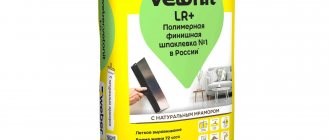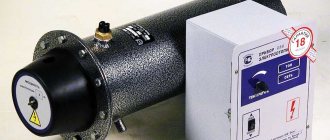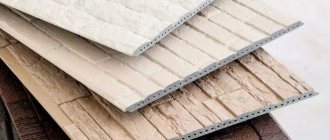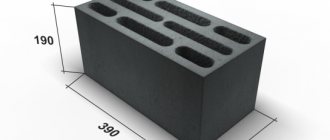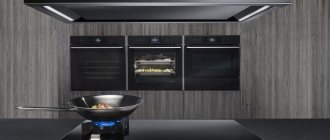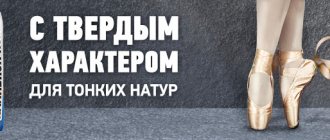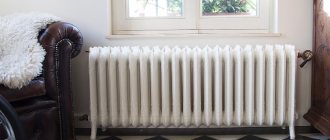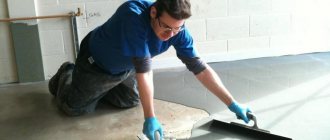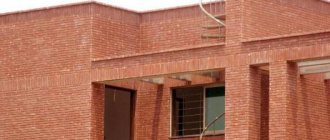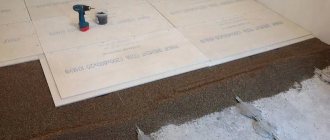Domestic manufacturers are increasingly pleased with high-quality products. The Volma company, which offers comprehensive solutions, was no exception. Self-leveling self-leveling floor Level Volma increases the period of time you work with the solution. The most important distinguishing feature: the mixture is flexible and plastic for 60 minutes after kneading, while other manufacturers achieved a maximum of 40 minutes. This makes it possible to work with large areas in one approach. In this case, it is recommended to purchase 90-liter containers - this way you will save effort on mixing and speed up the installation process.
Characteristics of Level Express
The floor is called self-leveling due to the principle of a self-leveling system.
A wet solution is poured onto the prepared base, which spreads evenly over the surface, filling all the unevenness, potholes and cracks. Due to the reduced viscosity of the mixture, an absolutely smooth and even floor is formed. The Volma level is suitable for pouring concrete and cement-sand foundations. With its help you can create an even coating up to 100 mm thick. This is an excellent basis for laying linoleum, parquet, laminate, ceramic tiles, and carpet.
Advantages of Volma brand Nivelir-Express mixture
- Ideal leveling - the plastic solution independently fills all the cracks and establishes balance in case of differences in the floor. The smooth surface does not require additional processing.
- High strength - an indicator of 15-20 MPa in compression is noted. The self-leveling floor seems to be a reliable basis for various types of finishing coating.
- Manufacturability - the leveling solution is easy to prepare and levels the surface without additional effort.
- Ecological purity - the Volma mixture is based on natural ingredients that are safe for health.
- Reduced thermal conductivity is the optimal material option for installing heated floors.
- Reasonable cost - for a package of Volma Nivelir Express weighing 20 kg in different regions the price is offered from 230 to 325 rubles.
- High hardening speed - the mixed solution is suitable for use within 45-60 minutes. After 5-6 hours you can walk on the floor freely. The self-leveling surface reaches its final strength after 72 hours.
- The versatility of the coating - it is possible to apply the quick-hardening composition manually or mechanically.
What is the consumption of dry mixture per 1 m2 of floor?
The instructions on the paper packaging indicate that the approximate powder consumption when pouring 10 mm thick is 12.5 kg. For example, in order to level the base of the floor in a room of 20 sq.m. A centimeter layer will require 13 bags of dry material. With a coating thickness of 15 mm, the consumption per 1 m2 will already be 19 packages weighing 20 kg.
Reviews of the self-leveling field Volma Level Express
Evgeniy, Moscow.
“When we decided to repair and insulate the balcony, we began to look for different options and calculate the cost. Neighbors gave excellent characteristics to the Volma self-leveling floor. We listened to their feedback and chose the fast-hardening brand Level Express. The difference in the floor in different places was from 0.5 to 6 cm. First we bought 4 bags of the mixture, then we had to get another one. To knead, you needed a bucket and a construction mixer. The finished solution is liquid, similar to kefir. They poured it in several stages and immediately rolled it with a needle roller. There were few bubbles and they went away quickly. Overall, we were pleased with the result - fast, clean and relatively inexpensive.”
Svetlana Kononenko, St. Petersburg.
“I heard a lot of rave reviews about self-leveling quick-hardening floors and decided to buy them for a kitchen renovation. The positive characteristics turned out to be not entirely accurate. I filled the floor in one step, having previously prepared a solution from 6 bags. It only took me half an hour to distribute the entire solution. But I did not dare to roll it with a roller, since the surface began to set instantly. As a result, irregularities and small depressions remained along the walls, which had to be corrected with additional filling. My review is negative: the Leveling Express self-leveling floor is very strong and thick for self-leveling, and its hardening time is too short. Therefore, it is unrealistic to treat a large area at one time.”
Nikolay, Ufa.
“I heard a variety of characteristics of self-leveling floors. Many were satisfied with the quick results and inexpensive price. There were also negative reviews from those who were unable to cope with the leveling work on their own. Still, I decided to buy the fast-hardening mixture level from Volma. For two rooms I needed about 60 bags of 20 kg each. Online stores offer different prices for packaging. Considering the volume of the order and advance payment, I managed to purchase the goods for 250 rubles. The floor pours easily and spreads quickly. The work is simple and mess-free. The surface is smooth and shiny. My review is positive: this is an excellent option as a subfloor under laminate.”
Andrey, Moscow region.
https://youtube.com/watch?v=lgTQUZZhfso
Reviews
Boris, Astana: “The material consumption was 1 m2 more than indicated on the packaging. There were also some problems with the amount of water, as they thought. I understand what the consistency should be, I have experience, but what should beginners do who don’t know what is what and sacredly believe what is written on the product.”
Anton, Moscow: “I filled an 18 m2 floor. If you dilute everything strictly according to the instructions, then the mixture turns out thick, and if you pour it alone, then while you take measurements, the previous area will have time to dry out. As a result, it is difficult to make a smooth transition between sections, and it is also difficult to fill a large area at once, which is why the floor turns out to be multi-level. Then I tried mixing 8.5 liters of water per 20 kg of mixture, and then everything went like clockwork. The mixture spread on its own, and everything was smooth, the only thing was that it took a little longer to harden. I drained the excess water into the corridor from the room through a slot in the foam edge, and then covered the entire surface with shavings and sawdust so that the water would be absorbed quickly.”
Advantages of Volma self-leveling floors
Products manufactured by the Volgograd company have the following advantages compared to other brands:
- When the dry mixture is diluted correctly, the finished solution has a liquid consistency. The density of the composition can be controlled by adding clean water. Working with the solution is greatly facilitated due to the fact that it is independently distributed over the surface.
- Low price of dry mixture compared to imported brands. Despite this, the composition has proven itself at a fairly high level and has earned popularity among consumers.
- The composition includes polymer components that increase the service life of the coating and increase its strength. After 7-14 days - the full period of hardening of the mixture - the coating can withstand loads of 12 MPa.
- Processing of Volma mixtures is carried out both manually and automatically. Other self-leveling floors are only suitable for one treatment method.
Varieties of consistencies from the Volma company
The demand for ready-made dry mixtures is growing from year to year, as workers appreciate the convenience of dissolving ready-made components without selecting them in suitable proportions. Different types of work have different consistency requirements. Therefore, manufactured products differ in certain main indicators. There are two main types of consistencies for self-leveling floors:
- With a cement base. This type of consistency has become very widespread, as it corresponds to the traditional recipe for floor screed, which has been used for decades. The advantage of cement screed is that it smoothes even the most complex surfaces and is used as a preliminary layer for the purpose of repairs.
- With a plaster base. It is on this basis that self-leveling floors are made. Consistencies with a gypsum base are used for final finishing of the floor. Its advantage is that during the work there is no need to do difficult preliminary work and lay the coating on the base.
Consistencies from the Volma company are presented in a wide range, among them two brands stand out in particular - “Rovnitel Rough” and “Nivelir Express”.
Volma product range
Volma company product range table
The company began its activities with the production of gypsum plaster mixtures, which was several decades ago. Gradually modernizing and mastering new technologies, the production association has steadily expanded the range of materials produced, while simultaneously improving their quality and optimizing its pricing policy. As a result, today the assortment of the Volma brand is represented by multifunctional dry mixes and specialized mortars in containers of 20, 15, 10 kg, which are in high demand among consumers and have mostly positive reviews. The basis of success is reasonable price and consistently high quality of materials.
How to calculate the required amount of Volma dry mixture for leveling the floor
If you plan to level the floor with Volma self-leveling compound, then, one way or another, you will have to purchase the material. It doesn’t matter whether the work is carried out independently or a team is invited - it is necessary to know the required amount of dry mixture.
For each type of liquid formulations, the manufacturer indicates the average consumption. It is usually expressed in kilograms of dry mixture, which must be spent in order to pour a 10 mm layer over an area of 1 square meter. All these values are indicated in the tables above.
Using this indicator, the known area of the room and the planned thickness of the future leveling screed, it is not at all difficult to calculate the total amount of composition.
In addition, sometimes it is necessary to take into account the difference in heights if there is a large deviation from the horizontal plane on the original surface. Even during preliminary inspections and measurements using a hydraulic or laser level, the ideal horizontal line is struck. Starting from it, they find the “extreme” points, that is, the highest and lowest. The difference between them will precisely show the amount of difference that needs to be eliminated by pouring the leveling mixture.
It is probably clear to everyone that the minimum specified thickness of the screed (leveling layer) will be exactly at the highest point of the original floor surface.
When making calculations, it is recommended to immediately include a reserve of about 10% - it’s rare that there is enough material “neck to neck”. In addition, there may be unforeseen losses, especially due to inexperience.
The calculator offered below is specially programmed to calculate the amount of Volma dry mixture for pouring floors. The cost values of the listed varieties are already included in the calculation algorithm. The result will be shown taking into account the reserve (10%), in kilograms, with subsequent conversion to the number of standard factory packaging (20 or 25 kg bags).
Calculator for calculating the required amount of dry building mixture "Volma" for pouring a floor
Go to calculations
Pouring technique
Installation of the self-leveling floor should begin from the far corner of the room. The mixture is evenly distributed over the floor using a spatula, and the resulting bubbles are removed with a needle roller with a telescopic handle. The spikes should be no more than 30 mm in length and exceed the fill layer. As a result of leveling, an absolutely smooth surface with a characteristic glossy shine is obtained.
Using a staged pouring technique, stripes are applied in parallel until the entire subfloor sub-base is filled. When pouring the solution, you need to monitor the uniformity of filling and avoid technological interruptions. When the entire floor surface has been filled, it is necessary to remove the beacons and levels and quickly go over the floor with a roller. This will create a smooth surface and smooth out “wrinkles” that may form when working with a spatula.
The diluted solution should be used within an hour. When filling large premises, the zoning method should be used and each technological section should be installed separately. The area of one zone should not exceed 15 square meters. m. You can walk on a freshly poured floor 4 hours after finishing the work, lay tiles after 2 days, and lay linoleum after 10-14 days.
Working with solution on the surface
Pour the finished mixture first into deeper potholes and cracks with a gradual transition to hills. It is advisable to do all the work by two people. One will prepare the solution, the second will pour it. To level the composition, a needle roller on a telescopic handle and a spatula are usually used. The length of the spikes should not be less than 30 mm.
The solution poured onto the surface is leveled using a spatula so that the resulting strips overlap each other. Upon reaching the edge of a limited area or one of the sides of the room, the composition is passed several times with a needle roller. This is done to eliminate air bubbles from the mixture, forming a flat surface due to the movement of the solution and vibrations.
Before you start pouring the Volma-Nivelir Express solution, you must close the doors, windows and vents so as not to create drafts. If left unaddressed, they can cause surface cracks and reduce the strength of finished floors.
After four hours have passed since the floor was poured, you can move on it; after two days you can begin laying ceramic tiles. Laminate or linoleum is laid only after the surface has completely dried.
Pouring self-leveling floor Volma "Nivelir Express"
To pour the solution onto the floor you will need a set of tools:
- Spatula - it is used to distribute the consistency.
- A needle roller with a long handle is used to remove air bubbles from the consistency. During leveling, the bubbles are punctured with a roller and the entire air space disappears from them.
The mixture begins to be poured from the corner of the room farthest relative to the entrance. The filling method looks like this:
- The mixture is poured onto the floor in a narrow strip.
- Using a spatula, the solution is moderately leveled over the surface.
- The solution is applied so that it fills all the depressions in the surface and makes a completely even layer.
- Carefully monitor the appearance of air bubbles in the consistency and remove them using a needle roller.
- Use a roller to roll over the surface of the poured consistency so that it spreads moderately across the plane. The result is a smooth surface with a glossy shine.
- Having distributed the first strip over the floor, they begin to fill the next one, which is parallel to the adjacent one.
- The function is repeated strip after strip until the entire surface is covered with the substance.
Volma self-leveling floor consumption is four kg per m2, provided that the layer thickness is 5-7 mm. For a room with a square area of 40 m2, about eight bags of dry consistency are needed. One bag contains 20 kg of product, in other words, 100 sixty kg of dry consistency for the floor is needed per room. The surface will fully set in 8-10 hours, and loading it with furniture and other elements is allowed only after 2-3 days.
Base floor mixture Volma “Coarse leveler”
This brand is represented by a dry consistency consisting of various components. The consistency base is cement, lime with fillers from natural raw materials and chemical additives, reinforced with fiber. The advantages of the consistency are relatively low shrinkage, strength and high-quality adhesion to the base. The coating can withstand low temperatures, is simply applied, sanded and leveled due to its plastic properties. The work is carried out in a relatively short period of time, since the mixture quickly hardens and forms a strong coating layer.
The “Coarse leveler” mixture is used during the initial work as a starting finishing layer. Suitable for concrete and cement bases with a width of 10 to eighty mm, in some cases a layer of up to 100 mm is allowed. The consistency is used to carry out repair work on the surface, eliminating cracks and smoothing it.
What they say about the advantages and disadvantages of Volma self-leveling floors
Pouring Volma brand self-leveling floors, by and large, does not have any significant features. Therefore, there does not seem to be much point in dwelling on this issue in detail - enough attention has been paid to such technology on our portal.
Features of the technology for pouring self-leveling floors
Fast, high-quality, reliable - this is how we can briefly characterize the opportunities offered by modern compounds. How to fill a self-leveling floor with your own hands
– read in a special publication on our portal.
In addition, if desired, the reader can compare the characteristics of Volma floors with similar products from well-known Russian and another domestic ones
.
And here it’s better to pay a few minutes of attention to the reviews of consumers who have already tried Volma self-leveling floors in practice.
The liquid formulations “Nivelir Express” and “Nivelir Comfort” deserved the most comments. It is not surprising - they are the most popular and most widely used in the decoration of apartments and houses. It must be said right away that opinions are mixed.
Quite a lot of both amateurs and professionals praise these self-leveling floors, noting both the low cost of dry mixtures and the high-quality result obtained in the end. But, at the same time, they also point out those “flaws” that should be kept in mind when choosing and purchasing material, when working with it.
Attention! The reviews below do not serve any advertising or anti-advertising purposes. They do not express the personal opinion of the author, who had no experience working with Volma liquid formulations.
This is just a kind of “sublimation” of the comments made, posted on various open Internet resources.
So, what claims are made against these compounds:
Most of the complaints are about the discrepancy between the dry mixture consumption indicated by the manufacturer and the actual costs. It turns out that without creating a reserve, there is a high risk that there simply will not be enough material, and you will have to buy more. Immediately - about additional purchase. Compositions of the same name, but from different batches, may differ slightly in color, consistency, and even quality. When mixed with the specified amount of water, the solution is not fluid enough. That is, the self-leveling property of the filled layer deteriorates sharply. Only experience helps to arrive at the optimal amount of water, and the result at first may well not be entirely successful
The composition does not disperse well over the surface, especially at small pouring thicknesses, up to 10 mm. A fairly common opinion is that such a floor does not live up to the name “self-leveling”
Along the edges of the filled area, even with a well-primed surface, the composition begins to thicken very quickly. The result is difficulty in leveling and waves remaining after drying. In addition, marks from the needle roller remain but are not completely healed. Based on the above, it is difficult to fill even a room that is not particularly large in area (more than 10 m²). You definitely can’t do it alone - you need a large amount of one-time mixed solution (at least two bags) or its almost continuous preparation. And filling in sections to make it high quality requires a lot of experience, and for a beginner it can be an impossible task. There are claims that the flooded floor takes a very long time and dries unevenly. This sometimes causes cracks to appear. Not all dry mixes are equal in quality. There are many statements that in bags there are completely foreign fragments - pebbles, and quite large ones. For some reason, there is an opinion that you should be especially wary of the products of the Orenburg plant.
But, we repeat, the negative comments expressed cannot be called predominant. The general background is still formed by positive impressions. And these shortcomings often result from non-compliance with technological requirements during pouring.
And in order to highlight the issue of practical application to a certain extent in this publication, we will post two videos:
The first of them is the manufacturer’s animated instructions for using the dry construction mixture “Volma Level Express”
Video - Instructions for filling the floor with Volma Level Express
https://www.youtube.com/watch?v=DkDncBteq4w?rel=0
The second story is about the practice of using this composition, with comments from the craftsmen who performed the pouring.
Video: How to fill the floor yourself with the self-leveling composition “Volma Level Express”
https://www.youtube.com/watch?v=ijH0_Xme1Ug?rel=0
Preparation of the solution
Volma-Nivelir Express dry mix is supplied in 20 kg packages. In order to prepare the solution, this volume of material requires about 6 liters of clean water. It is advisable to use cold liquid. The viability of the finished Volma-Nivelir Express solution lasts about 60 minutes. The characteristics of the mixture do not deteriorate after this time, but it becomes more difficult to work with. It is advisable to distribute the prepared solution over the surface within an hour. If you plan to process a large area, then initially it needs to be divided into several technological sections.
The volume of water indicated on the packaging of the mixture is poured into a pre-prepared container. Then, gradually and in small portions, dry material is poured from the bag. The resulting mixture must be stirred after 3-5 minutes. During this time, the powder should have time to be saturated with water. Mix the components using a construction mixer or a drill with a special attachment. After the first “shuffle,” the mixture is left to brew for 5-10 minutes, after which it is stirred again. After preparing the solution, you can begin leveling the floors.
VOLMA – Level Express (20 kg.) self-leveling floor (64)
“VOLMA-Nivelir Express” is a dry mixture based on a complex binder, fractionated quartz sand and modifying additives, which ensure high mobility of the solution, strength and optimal operating time. Scope of application: The mixture is intended for high-quality leveling of concrete and cement-sand floor subfloors with a thickness of 5 to 100 mm under subsequent decorative coverings - carpet, linoleum, parquet, ceramic tiles, etc.). It is used in all residential premises and public buildings. For interior work. The mixture is intended for manual and machine application. Requirements for the base: The base must be dry, durable, free from dust, dirt and grease stains. The “age” of the cement-sand base is at least 28 days, and the concrete base is at least 3 months. It is recommended to carry out floor laying work under the following conditions: - base humidity is not more than 6%; — base temperature not less than 5ºС; — air temperature not less than 5ºС; — relative air humidity no more than 75%. Preparation of the base: Clean the supporting base from dust, dirt, lime, oils, fats, wax, paint residues, etc. Remove loose and loose areas of the base. Place damping pads (tape or thin strips of polystyrene foam) along the walls and columns where the floor meets. Fill cracks and large potholes with VOLMA-Nivelir Express mixture mixed with less water at least 1 day before pouring. Protect steel elements in contact with the self-leveling mixture solution from corrosion. On substrates that are very damp, contaminated (for example, with bitumen mastics, machine oil, etc.), as well as those with low strength, it is recommended to install floors on a separating layer. The future thickness of the layer can be indicated by setting level templates using a leveling ruler and portable benchmarks. Designate technological areas for pouring the floor. If the area is more than 50 sq.m. and with a diagonal of more than 10 m, an expansion joint should be installed in the floors, but always above the existing joints in the load-bearing foundation. Prime the prepared base and areas of the walls that will be in contact with the self-leveling floor with VOLMA-Universal primer. Prime porous surfaces 2 - 3 times with an interval of 4 hours. Laying the self-leveling floor should be done only after the primer has completely dried. It is not recommended to use other primers without prior consultation with a specialist from the manufacturer VOLMA-Nivelir Express. Preparation of the solution: For manual application: pour the dry mixture into clean water (water temperature from +5 to +20 ºС), based on the proportion of 0.29 - 0.34 liters of water per 1 kg, and mix using a professional mixer or drill with nozzle until smooth for 5 minutes. Let the solution sit for 3 minutes and then mix again. Do not overdose on water! For machine application: pour the dry mixture into the hopper of the machine (unit) and, by adjusting the water flow, select the required consistency of the mixture. To check the consistency, pour 1.0 liters of solution onto a flat, non-absorbent base (for example, glass, film, foil). The diameter of the spot should be 50-55 cm. Work procedure: 1. Pour the prepared mixture evenly to the specified thickness, avoiding process breaks. 2. The designated technological area must be filled within 40-60 minutes. When pouring the floor manually, the area of the technological area should be 20-25 sq.m. or correspond to the area of one room. 3. Immediately after pouring the solution, it is necessary to remove the levels and remove air bubbles from the mass using a needle roller, squeegee or brush, making translational movements along and across the poured surface, starting from areas adjacent to the walls and columns. 4. During the hardening of the self-leveling floor during the first two days, drafts and direct sunlight should be avoided, and natural ventilation and airing of the premises should be ensured. 5. The drying time of the self-leveling floor depends on the thickness of the layer, as well as on the thermal and humidity conditions in the room. 6. Work on laying the coating on a leveled floor can be done no less than 7 days after pouring. The residual moisture content of the poured floor when laying the subsequent coating should not exceed 1%. Storage conditions: Store bags with dry mixture “VOLMA-Nivelir Express” on wooden pallets in dry rooms. Pour the mixture from damaged bags into whole bags and use first. Guaranteed shelf life in undamaged original packaging is 12 months.
General information
Brief description (characteristics)
| Formation thickness | 0-10 cm | |
| Optimal layer thickness | 0.0.5-10 cm | |
| Material consumption with a thickness of 1 cm | 12 kg/m2 | |
| Water consumption per 1 kg of dry mixture | 0,30-0,35 | |
| Water consumption per 20 kg bag | 5.85-6.85 liters | |
| Viability of the finished solution | 1 hour | |
| Temperature of use (air, surface to be treated, materials) | From +6 to +32 degrees | |
| Compressive strength after 4 weeks | Not less than 16 MPa | |
| Surface adhesion strength | Not less than 1.0 MPa | |
| Ability to walk on the floor | After 240 minutes | |
| Possibility to load the floor | After 3 days | |
| Production of coating with residual moisture | No more than 1.5% | |
Application area
The mixture was created to level and create a high-quality floor with a thickness of 0.05 to 10 cm, the base being concrete or cement-sand, and for further decorative finishing of the coating - linoleum, carpet flooring, parquet, ceramic tiles, etc. Used for any residential premises and public buildings. For interior work only. The mixture is suitable for application by hand and machine, as well as for heating using a floating floor system.
Floor requirements
The base must be dry, highly durable, and free of dirt, dust and grease stains. The “age” of a cement and sand base should be at least 4 weeks, and a concrete base at least 3 months. It is recommended to carry out work under conditions where the base humidity is not more than 6%, the temperature is not less than +5 degrees, the air temperature is not less than +7 degrees, and the relative humidity is not more than 70%.
How to work with Volma dry screed?
Leveling dry Volma screed using beacons
To work, you need to prepare the surface. The process is no different from that described above. The mixture is also prepared with a construction mixer according to the same principle as self-leveling flooring. However, there are some differences. The main one is the proportions of water and dry matter. For this solution, 0.14 liters of cool water is taken per 1 kg of bulk mixture. That is, to seal the contents of the bag, you will need 3.5-3.6 liters of water.
- After preparing the base for pouring, guide beacons should be installed. To do this, prepare a thicker solution, which is laid out in slides along one line, the distance between them is about 60 cm. The plaster beacon is gradually pressed into the laid out solution until it reaches the intended level. When installing the beacon, you should carefully monitor its evenness (it may bend) and horizontality.
- After the solution has set, you can begin arranging the screed. The prepared working mixture is poured between the beacons, leveled with a trowel and pulled along the guides using a trapezoidal rule.
- When the material has partially set (after 6-8 hours), the surface, after wetting it, must be rubbed with a plaster float. Leveler consumption for a layer thickness of 5 cm is approximately 50 kg per m2. That is, for a standard balcony you need to buy only 4-5 bags of dry product.
Finally, watch the video, which clearly displays all the technological aspects associated with the use of the Volma brand products discussed above. After watching the video below, there should be no questions left about the working nuances and quality of the described building mixtures.
Making a screed with the consistency of Volma “Coarse leveler”
The preliminary work for laying the “Rough Leveler” is no different from that for laying a self-leveling floor:
- Get rid of areas that do not adhere well to the base.
- Clean the surface from greasy stains.
- They wash.
- Primed.
- Dry it.
Apart from this, the conditions for performing the work are no different - temperature from 5 to 30°C, no drafts. A universal primer for concrete surfaces is chosen; aqua is used for bases with the highest water absorption rates. If necessary, the primer is applied in two layers with a time interval of two hours between works. The clearance between laying and priming the floor is one hour. These characteristics are in demand only for rooms with normal humidity; for rooms with high humidity, the time increases.
Leveler laying method:
- Beacons are being installed. One horizontal line is measured with a level, small piles of mortar are laid along this strip, into which beacons are installed. Keep the evenness of the beacon strip under control. The solution used for this procedure is treated with a primer.
- Prepare a solution. Pour water at a temperature from +5 to +20°C into a large container. The proportions for consistency are 0.13-0.15 liters. water per kg of dry consistency.
- A measured amount of powder is slowly poured into the water, stirring the solution in an instant. Filling is done in small portions, each of which is given 5 minutes. For complete dissolution of all components. During these 5 min. The solution does not interfere.
- The fully prepared mixture must be used no later than two hours later. It is unacceptable to dilute the mixture with water in excess of the indicated amount, since in this case cracks and peeling will appear on the finished screed.
- The mixture is placed between the beacons using a trowel.
- Using a trapezoidal rule, the solution is leveled to the level of the beacons.
- Leave the mixture completely spread out on the floor for 7.5-8 hours, and then go over it with a plastic grater to achieve perfect evenness. In this case, the surface of the screed is not sufficiently moistened with water.
When the temperature in the room is about +20°C, the floor becomes usable for use within seven hours after installation is completed. The screed dries completely only after 3-4 weeks. Decorating the floor is allowed 3.5-5 days after the floor has been poured. Volma is a simple and very self-leveling floor leveler; reviews from consumers only confirm its practicality and level of properties.
Optimal drying conditions
The rules for all types of self-leveling floors are very similar:
- Sudden temperature changes in the room should not be allowed.
- Avoid exposure to ultraviolet radiation.
- Avoid drafts.
- Maintain air humidity within 60-65%, for polyurethane - 80-85%.
- Fill only on a prepared and dried surface.
- Make as even a layer of the mixture as possible, otherwise the hardening time will increase by 20-30%.
Protection from ultraviolet radiation will be provided by ordinary foil and a screen on the windows. It is also practiced to cover the floor with film for construction work. The heated floor is not turned on until the filler has completely dried. Heating radiators should simply maintain the optimal temperature in the room:
- Gypsum mixtures – 40-46°C.
- Cement - 20-25°C.
- Polyurethane – 10-25°C.
In this case, heating above the specified temperatures will lead to stopping drying or deformation and damage to the coating.
You can check whether moisture remains in the filling field in the following ways:
- A special device.
- Using film and tape.
- A bowl of hot water.
Not all builders have a device for measuring humidity levels. Therefore, it is advisable to use improvised means
This is important when laying parquet, laminate, linoleum and other similar coatings. They do not tolerate excess moisture, which will appear over time.
Two methods are used:
- A piece of film measuring 100 mm by 100 mm is fixed on any part of the floor. If the poured mixture darkens over time, then the screed is not ready for loads. Drops on the film indicate slow evaporation.
- Hot water is poured into a basin and placed on the floor. A darkened area under the bottom indicates the presence of moisture in the screed. The outside of the basin should be completely dry.
There are many reasons for the slow process. The main ones are improper preparation of the mixture and non-compliance with conditions and technology.
What else to read on the topic?
Assortment of dry mixtures for floor leveling
If you look at the “labor path” of the vast majority of domestic companies in this field of construction materials production, you will notice a general pattern. Most often, they were founded in the 90s or 2000s, after which their rapid growth followed, coinciding with a sharp increase in the volume of private construction in Russia. As a rule, the very idea of organizing such production was prompted by the successful activities of foreign companies, and, in fact, was aimed at creating competition in this segment of the construction market, relying on local resources and counting on accessibility for domestic consumers.
Volma is a company with extensive experience and a very extraordinary history.
Against this general background, it stands out very much with its extraordinary history. It is very noteworthy that the decision to create a plant for the production of building materials was made literally immediately after the end of the Battle of Stalingrad. The city was completely destroyed, and a colossal amount of materials was required to restore it as quickly as possible. Therefore, the construction of the first production facilities began in 1943, and already in January 1949, the Stalingrad Gypsum Plant began shipping finished products, constantly increasing its range and volumes.
It is interesting that the same plasterboard, which in our time is one of the most modern and popular construction and finishing materials, was put into production at the plant back in 1953, under the name “dry plaster”.
Nowadays, production capacity is not limited to Volgograd. Plants were launched in the Moscow, Orenburg and Chelyabinsk regions, and in the Republics of Tatarstan and Adygea. This is understandable, since the demand for the products of this brand is traditionally high.
Prices for self-leveling floor "Volma"
self-leveling floor "Volma"
Powerful production complex "Volma-Maikop" in the Republic of Adygea
The modern range of products produced under this brand is very wide. These are plaster and putty mixtures, assembly and tile adhesives, plasterboard of various modifications, tongue-and-groove gypsum boards, thermal insulation mats, special solutions and primers. A separate “section” in this list includes mixtures for leveling floors. To date, five titles have been presented:
- "Volma the Rough Riveter"
- "Volma Level Arena"
- "Volma Level Express"
- "Volma Leveling Top"
- "Volma Level Comfort"
The compositions differ in their characteristics and purpose. Therefore, it makes sense to consider each briefly separately.
"Volma the Rough Riveter"
To be honest, such a composition cannot justifiably be attributed specifically to self-leveling floors. Rather, in terms of its working consistency and installation principle, it is closer to the “classic” screed. Nevertheless, we will pay attention to it, especially since “Volma Rough” is very often used in “tandem” with other liquid formulations of this brand.
"Volma Leveler Rough" - allows you to eliminate very strong level differences and surface unevenness
The composition is made on a cement base, with the addition of lime to increase the plasticity of the composition. Filler – purified fractionated sand. In addition, to increase the strength of the resulting screed, fiber fibers are included in the mixture, creating internal reinforcement. High adhesion, ductility, non-shrinkage, rapid hardening and strength gain are ensured by a complex of polymer additives.
The composition is suitable for both interior work, without restrictions on the degree of humidity of the room, and for exterior work. It fits perfectly into any “warm floor” system, both as a rough foundation and as a heat-accumulating screed covering the laid contours of pipes or cables.
It has very respectable frost resistance - F50.
After hardening, Volma Rovnitel Rough can be easily sanded or can become the basis for subsequent pouring of a thin-layer self-leveling compound. However, if the requirements for ideal surface smoothness are not strictly set, then with effort you can achieve a flat floor with such a composition, so to speak, in one go.
The fluidity of the diluted mortar is low, so it is usually laid manually and leveled according to the beacon system, like a regular screed.
The main parameters of the composition are in the table below:
| Name of characteristics | Indicators |
| Application layer: | |
| - acceptable | Up to 100 mm |
| - optimal | From 10 to 80 mm |
| Mixture consumption for a layer of 10 mm | 18÷20 kg/m² |
| Standardized amount of water for mixing the solution: | |
| - per 1 kg of mixture | 0.13÷0.15 l- |
| — per package (25 kg) | 3.25÷3.75 l |
| Mixing water temperature | + 10÷30 °C |
| Temperature of the base for pouring | + 5÷30 °C |
| Viability of the solution after mixing | At least 120 min. |
| Possibility of walking after filling: | |
| - under normal conditions | In 7 hours |
| — at temperatures from +5 to +10 °C | In 12 hours |
| Strength after full ripening: | |
| - for compression | Not less than 20 MPa |
| - detached from the base | Not less than 0.3 MPa |
| Frost resistance | At least 50 cycles |
| Possibility of further work: | |
| — final leveling or laying of ceramic tiles | After 7÷14 days |
| — laying laminate, parquet boards, linoleum, etc. | After 21÷28 days |
| Factory packaging | Kraft bag net 25 kg |
| Approximate price per package | From 180 rub. |
"Volma Level Arena"
This composition also has a cement base, and is also intended for thick-layer leveling of floors with significant defects. True, already in the name itself the manufacturer directly refers it to liquid formulations.
Prices for Volma Level Arena
"Volma Level Arena"
"Volma Leveling Arena" - self-leveling composition for thick-layer leveling of floors
After complete hardening, a very durable base is created that is not afraid of high loads, high humidity and temperature changes. "Volma Level Arena" is equally good for both external and internal work. For example, it will be an excellent wear-resistant floor in a garage, especially if it is then coated with a special paint for concrete.
How can you paint a concrete floor?
Painting may well be a very successful alternative to tiles or other concrete floor coverings. Such finishing not only removes dust from the surface - it waterproofs it, gives it additional strength qualities, and transforms it aesthetically. What paints exist for concrete floors and how they are used - read in a special publication on our portal.
The composition is intended exclusively for manual application. It is quite suitable for “warm floor” systems. The minimum boundary of the filling layer is only 5 mm, which allows, if necessary, to immediately perform the final leveling of a heavily rough base, without resorting to thin-layer “levels”.
The composition characteristics are given in the table:
| Name of characteristics | Indicators |
| Application layer: | From 5 to 100 mm |
| Mixture consumption for a layer of 10 mm | 15÷16 kg/m² |
| Standardized amount of water for mixing the solution: | |
| - per 1 kg of mixture | 0.2÷0.23 l- |
| — per package (25 kg) | 5.0÷5.75 l |
| Mixing water temperature | + 5÷30 °C |
| Temperature of the base for pouring | + 5÷30 °C |
| Viability of the solution after mixing | No more than 60 min. |
| Possibility of walking after filling: | In 24 hours |
| Strength after full ripening: | |
| - for compression | Not less than 20 MPa |
| - detached from the base | Not less than 0.6 MPa |
| Frost resistance | At least 50 cycles |
| Operating temperature range | 0t – 40 to + 70 °C |
| Full strength set | After 28 days |
| Possibility of further work: | |
| - laying ceramic tiles | In 7 days |
| - laying linoleum or textile coverings | After 7÷10 days |
| — laying laminate, parquet boards, linoleum, etc. | After 10÷14 days |
| Factory packaging | Kraft bag net 25 kg |
| Approximate price per package | From 320 rub. |
"Volma Level Express"
This bulk composition is intended for interior work, only in heated rooms. There are also restrictions on the degree of humidity - such a screed is not intended for bathrooms, baths, showers.
Prices for Volma Level Express
"Volma Level Express"
"Volma Level Express" - for rough and fine leveling of floors in any premises, except those operated in high humidity conditions
The composition has a complex gypsum base - with fine-grained sand filling and polymer plasticizer additives. This determines the low consumption of the mixture per unit area, the good fluidity of the solution, and its rapid hardening after pouring and distribution.
The composition can also be used in the “warm floor” system. Moreover, if it itself becomes a heat-accumulating screed covering the contours, its thickness should be at least 40 mm. Well, if “Volma Level Express” serves only as a finishing leveling coating over a “warm floor”, then you can limit yourself to a thickness of only 5 mm.
Among all the self-leveling floors of the Volma brand, it is Nivelir Express that, perhaps, remains the most popular among private developers and professional finishers. This is largely due to the very favorable price of the dry mixture.
The main characteristics of the composition are summarized in the table:
| Name of characteristics | Indicators |
| Application layer: | From 5 to 100 mm |
| Mixture consumption for a layer of 10 mm | 12.5 kg/m² |
| Standardized amount of water for mixing the solution: | |
| - per 1 kg of mixture | 0.29÷0.34 l- |
| — per package (20 kg) | 5.8÷6.8 l |
| Mixing water temperature | + 5÷30 °C |
| Temperature of the base for pouring | + 5÷30 °C |
| Viability of the solution after mixing | No more than 60 min. |
| Possibility of walking after filling: | After 4÷6 hours |
| Strength after full ripening: | |
| - for compression | Not less than 15 MPa |
| - detached from the base | Not less than 1.0 MPa |
| Frost resistance | No, only for heated rooms |
| Possibility to load the floor | In 3 days |
| Possibility of laying the finishing coating | With residual humidity no more than 1% |
| Factory packaging | Kraft bag net 20 kg |
| Approximate price per package | From 240 rub. |
"Volma Leveling Top"
A very convenient composition when high-quality thin-layer leveling of the surface is required for further finishing. The peculiarity lies in the possibility of pouring a layer of only 3 to 20 mm thick in rooms and areas where difficult operating conditions are expected: high load, temperature changes, high humidity, etc.
"Volma Leveling Top" - ideal thin-layer floor leveling for the most unfavorable conditions of future operation
As you can immediately understand, this composition is equally suitable for any interior space and for exterior work. For example, with its help you can achieve ideal leveling of areas on the porch, terrace, veranda, gazebo or balcony. The coating is not afraid of frost and high humidity, and the permissible operating temperature ranges within impressive limits - from -40 to +70 degrees. This is quite suitable for the vast majority of regions of Russia.
Prices for "Volma Level Top"
"Volma Leveling Top"
The composition is based on special modified cement, enriched with plasticizing and strengthening additives. There are no restrictions on the use of Volma Level Top in any underfloor heating systems.
The main characteristics of the composition can be found in the table:
| Name of characteristics | Indicators |
| Application layer: | From 3 to 20 mm |
| Mixture consumption for a layer of 10 mm | 16 kg/m² |
| Standardized amount of water for mixing the solution: | |
| - per 1 kg of mixture | 0.21÷0.24 l- |
| — per package (20 kg) | 5.25÷6.0 l |
| Mixing water temperature | + 5÷30 °C |
| Temperature of the base for pouring | + 5÷30 °C |
| Viability of the solution after mixing | From 40 to 60 min. |
| Possibility of walking after filling: | After 4÷6 hours |
| Strength after full ripening: | |
| - for compression | Not less than 20 MPa |
| - detached from the base | Not less than 0.75 MPa |
| Frost resistance | At least 50 cycles |
| Operating temperature range | From – 40 to + 70 °C |
| Period of complete drying and strength gain | 28 days |
| Factory packaging | Kraft bag net 25 kg |
| Approximate price per package | From 430 rub. |
"Volma Level Comfort"
Composition on a complex basis (with a predominance of the gypsum component), allowing for ultra-fine leveling. According to assurances, it can be applied, as they say, “to scratch,” that is, in a layer, starting literally from scratch. A very important property when it is necessary to perfectly level the floor in conditions of severely limited coverage in height.
"Volma Leveling Comfort" is suitable for super-thin finishing floor leveling
This self-leveling floor is intended exclusively for interior use, for rooms with normal humidity levels. The mixture is completely environmentally friendly, completely harmless even for people with a predisposition to allergies, and is recommended for renovation in the premises of medical and educational institutions. High-quality gypsum helps maintain the most comfortable microclimate.
At the same time, the strength indicators of the frozen layer are quite decent. "Volma Level Comfort" will fully withstand operation as part of a floor heating system.
The characteristics of the Volma Nivelir Comfort self-leveling floor are shown in the table:
| Name of characteristics | Indicators |
| Application layer: | |
| - acceptable | From 0 to 100 mm |
| - optimal | From 5 to 80 mm |
| Mixture consumption for a layer of 10 mm | 12 kg/m² |
| Standardized amount of water for mixing the solution: | |
| - per 1 kg of mixture | 0.29÷0.34 l- |
| — per package (20 kg) | 5.8÷6.8 l |
| Mixing water temperature | + 10÷30 °C |
| Temperature of the base for pouring | + 5÷30 °C |
| Viability of the solution after mixing | No more than 60 min. |
| Possibility of walking after filling: | In 4 hours |
| Possibility to load the floor | In 3 days |
| Strength after full ripening: | |
| - for compression | Not less than 15 MPa |
| - detached from the base | Not less than 1.0 MPa |
| Frost resistance | No, only for heated rooms |
| Possibility of subsequent work | With residual humidity no more than 1% |
| Factory packaging | Kraft bag net 20 kg |
| Approximate price per package | From 250 rub. |
And also get acquainted with the varieties and technology of pouring self-leveling floors with a pattern in a special article on our portal.
Prices for "Volma Level Comfort"
"Volma Level Comfort"
Volma Level floor installation
The first and most important rule for high-quality leveling of the original flooring using Volma Level self-leveling flooring is a properly prepared base.
It must be clean, sound (no flaking areas) and dry. Unstable areas on the subfloor must be removed. Dust, debris, stains from oils and other caustic liquids are removed. Potholes and removal areas are sealed with a repair compound.
The base is carefully treated with a primer. This improves the adhesion of the original decking and leveler. In addition, the primer prevents the screed from drying out while it is drying. Recommended temperature range for work: +5 to +30 degrees Celsius.
The manufacturer recommends using branded primers. This is Volma-universal, suitable for dense bases such as relatively fresh concrete, and Volma-aqua for intensely absorbent old rough concrete screeds.
If necessary, the surfaces are primed two to three times at intervals of two hours to dry each layer. If the air humidity in the room is high, the drying time will be increased.
Before bottling the finished composition, a horizontal line is marked along the entire perimeter of the room using a level. The beacons necessary to control the level of the composition are installed on the thick composition of the screed and also leveled according to the level.
The screed is prepared in the following way: clean water of the required volume and temperature from +5 to +25 degrees Celsius is poured into the container. The calculation of the dry mixture per liter of water is 0.13-0.15 l/kg.
The bulk component is gradually poured into water and stirred with a construction mixer. After a five-minute break, the solution is stirred again. During this period of time, swelling of the components occurs. That is why pausing is mandatory.
Note that the finished mixture retains its self-leveling properties for two hours after mixing it.
A common mistake when preparing the mixture is too much water. Excess moisture leads to peeling of the applied leveler, loss of strength and the formation of cracks.
Surface preparation work for self-leveling floors
As mentioned above, self-leveling floors and Volma starting mixtures are laid without much effort and create a completely flat surface. But in order to carry out high-quality work, it is necessary to consider all the stages of surface treatment using a specific example. The first example is the installation of Volma “Nivelir Express” self-leveling floor on a cement floor painted with alkyd paint. The bulges reached a depth of up to one cm and were distributed over the entire surface - along the perimeter and at the joints of the slabs making up the floor. First, the surface is prepared for work.
The first step in the work is cleaning the floor. Care must be taken to ensure that the base is completely unstained. Particularly unacceptable is the presence of oil or grease stains, traces of paint and other contaminants, which reduce the level of adhesion of the self-leveling floor to the surface. All areas on the floor that are crumbling or peeling, or have poor adhesion to the base are cleaned. This is necessary so that the bulk mixture does not leak under the lower layers.
The floor is cleaned of dust and dirt, and this work is done very carefully. First, do dry cleaning with a vacuum cleaner or broom, and then wash the surface with a damp cloth until it is completely clean. The cleaned surface is left to dry and then treated with a priming material. This move is needed to give the surface a slight roughness, which increases the adhesion of the final treatment to the base. Normally, non-contact primer or any primer recommended by the self-leveling floor manufacturer is suitable for this work. The primer is applied to the surface with a brush or roller. When working on a huge surface, it is normal to use a roller; this will help significantly reduce the time it takes to complete the work.
The room in which the floor will be poured is carefully prepared. This is contained in providing good criteria for the performance of the work. These conditions must be maintained until the already poured floor has completely hardened to ensure its strength. Negative ambient temperatures in the room are unacceptable; the best indicator is from +5 to +25°C. The windows and doors in the room are closed well and tightly packed so that there are no drafts. During the drying of the consistency, drafts are also unacceptable.
